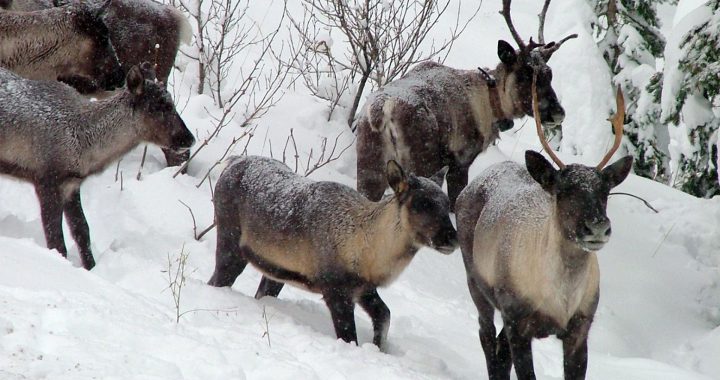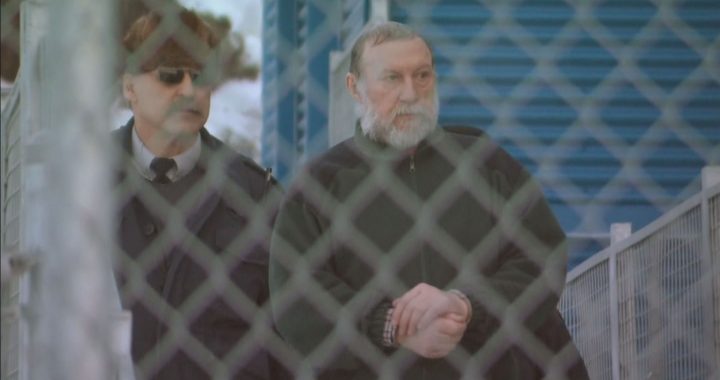(Signs welcome visitors to Fort McKay First Nation in Alberta. Photo: Brandi Morin/APTN)
(In early June, APTN correspondent Brandi Morin traveled to the community of Fort McKay First Nation. From June 22 to June 26, APTN will post her series on the community that sits in the heart of the tar sands.)
Brandi Morin
APTN National News
FORT MCKAY FIRST NATION – It doesn’t take long to get from one end of Fort McKay First Nation to the other.
There’s a single main road, a convenience store that operates out of an old industrial trailer and the band office, grand in both design and size.
Across the road sits the aging pow wow grounds and state of the art amphitheatre.
Heading north, on the left, is the K-9 school, the hockey arena and the after school program building.
On the right, sits the older town site. Drive less than a block, make a sharp left turn up the hill and you’ll find the new area of town, where the new houses are and more are being constructed.
This is the Fort McKay First Nation.
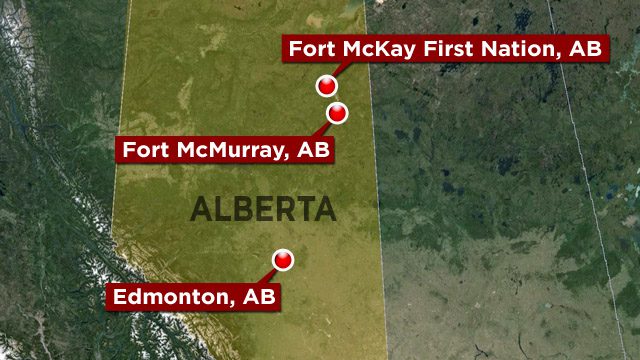
It sits about half hours’ drive north of Alberta’s oil boom town Fort McMurray.
The landscape morphs as you drive north from rolling hills thickened with trees and lush greenery, into bare colorless surfaces of brown, dust like substances.
The community is nestled in the bush off the busy highway with freshly paved roads and neatly groomed lawns.
And it’s surrounded by tar sands activity.
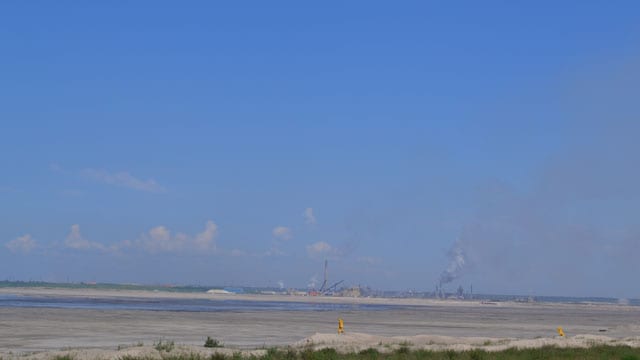
Plumes of smoke fill the air from a refinery just south of town and the boom of nearby tailings pond cannons can be heard like clockwork.
Depending on the day, and which way the winds are blowing, you can sometimes get a headache from the heavy smell of industry in the air.
“The community as a whole I don’t think they had a full idea of how this would unfold, how close things would get to the community 30 and 40 years later,” said Fort McKay sustainability department director, Alvero Pinto.
Fort McKay is used to media attention.
After all it’s smack dab in the middle of Canada’s largest natural resource. It has peaked the curiosity of many who marvel at its ability to thrive when, under the circumstances, it could’ve very well faded away.
It has been called a sell-out and a money hungry community. That, in exchange for the riches made off mining on their traditional territories, the people here have given their lands up to the vices of industry.
But some say Fort McKay has taken advantage of the opportunities brought to their doorstep.
It has formed partnerships with industry, established business endeavors and reaps the financial benefits that have come with development.
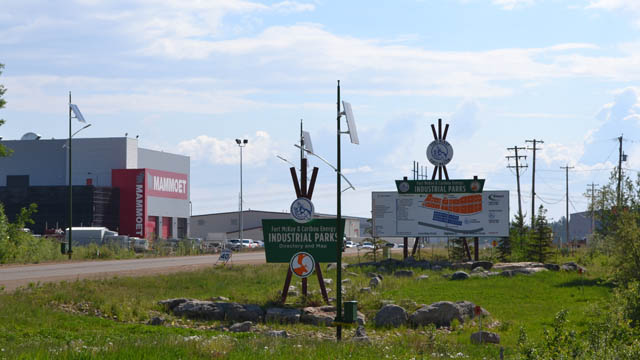
Yet, with the profits have come losses, including devastating impacts to the environment that is proving to be a challenge for the small community of 400.
However, the circumstances that led to Fort McKay to work with industry did not come without resistance. There was a time when they fought when suddenly industry showed up in their backyard of this once isolated community, with bulldozers, hurriedly clear cutting the forests to get to the tar in the ground, while backed by government.
The Indigenous people had been living in Northern Alberta for hundreds of years. The vast boreal forest terrain and water systems provided all of the needs for the mostly Cree, Dene and Metis people that lived there. They held a sacred reverence for the bounty the earth provided to them.
The Athabasca river served as the highway system for the Indigenous tribes there who hunted along its banks and fished in its deep waters.
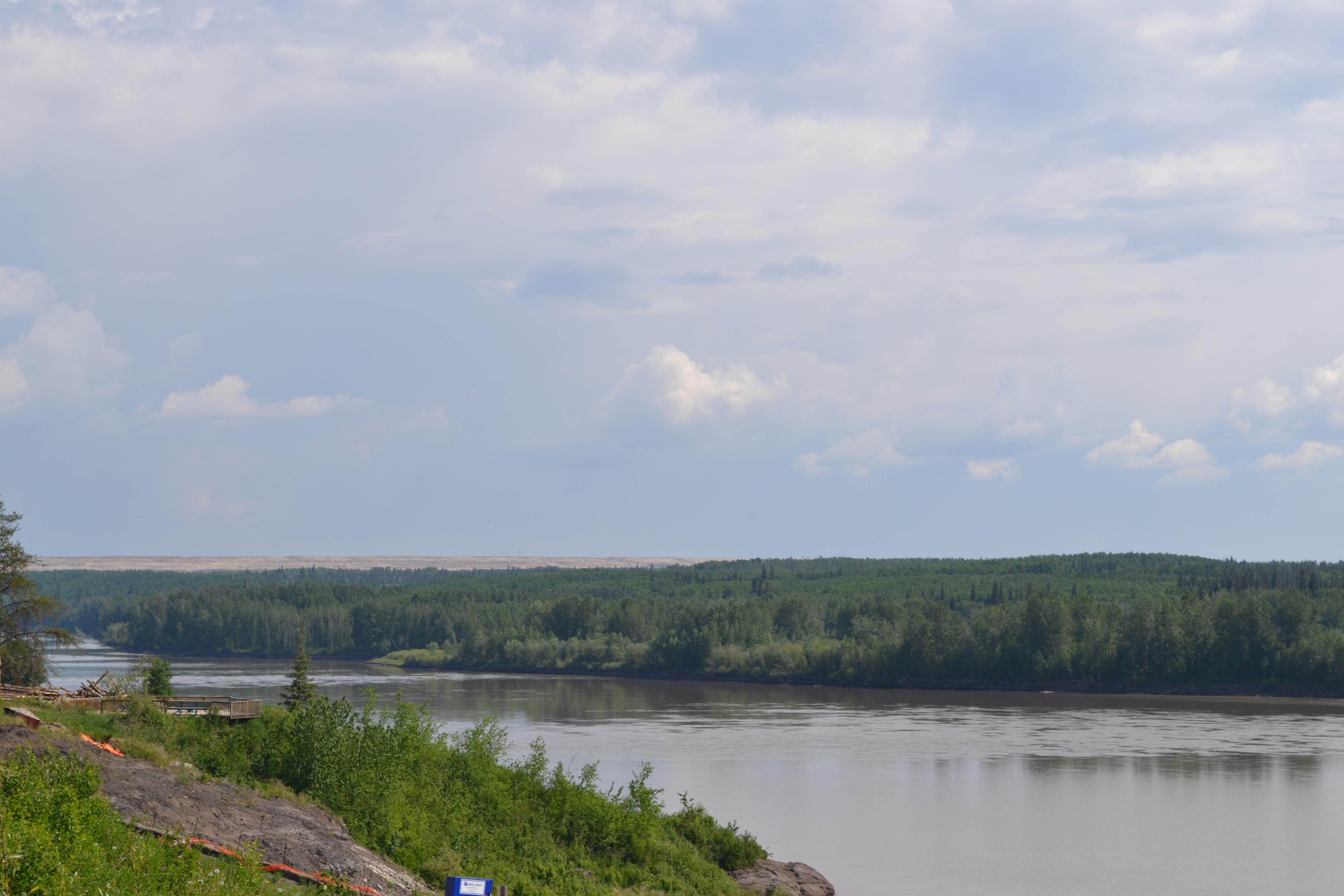
The Athabasca is the largest freshwater delta in the world. It stretches 1,231 km originating at Jasper National Parks Columbia Glacier and drains into the Peace-Athabasca Delta near Lake Athabasca, south of Fort Chipewyan, Alta.
The Woods Cree called the Athabasca “Aoapaskaw” meaning “where there are plants one after another,” in reference to the abundant vegetation growing along the river.
In 1820 the Hudson’s Bay Company established a trading post near the community of Fort Mckay that was located along the banks of the Athabasca. Soon began the prosperous era of the fur trade and trapping economy in the region.
In 1899 Fort McKay signed onto Treaty 8- a peace and friendship Treaty with the Crown. That agreement guaranteed its Indigenous signatories to “have the right to continue with our way of life for as long as the sun shines, the grass grows and the rivers flow.”
And then came the tar sands
Black tar has been oozing from the Athabasca for as long as local Indigenous oral tradition has been shared.

When the oil there was discovered by the Great Canadian Oilsands Company in the 1960s, it was the largest single private investment in natural resources in Canadian history.
Suncor was the first corporation to establish operations south of Fort McKay. Then came Syncrude and now dozens more to mine an area the size of Switzerland, with Fort McKay First Nation sitting in the middle.
The Indigenous people living there are no longer able to sustain their traditional lifestyles.
And it was a change that came almost overnight.
“At that time, Fort Mckay was looked at as kind of being in the way,” said Dayle Hyde, education director at Fort McKay First Nation. “They (industry) didn’t consult with the community.”
It didn’t take long for the community to start feeling the effects of industrial activity.
In the early 1980s, one of Suncor’s tailings ponds spilled into the Athabasca. At that time potable water was trucked in from Fort McMurray to pump houses in Fort McKay.
However, one pump house had burnt down and another had frozen in the frigid February temperatures. Thus, the people were temporarily getting their drinking water from the river and unknowingly drinking the contaminated water.
it showed people in Fort McKay that it could have an impact on the goings on in industry. It showed government and industry that they (Fort McKay) were going to follow through and not take things lying down,”
Hyde said industry representatives attempted to reach out to her mother, Dorothy MacDonald who was chief at the time via telephone to inform her of the incident. However, they weren’t able to reach her and finally came to the community almost three weeks later to tell her in person.
No one became seriously ill, but MacDonald brought charges against Suncor as a concerned citizen. The case was accepted by the courts and passed to Alberta Environment.
“Suncor ended up with a slap on the wrist, but it was important because it showed people in Fort McKay that it could have an impact on the goings on in industry. It showed government and industry that they (Fort McKay) were going to follow through and not take things lying down,” said Hyde.
Chief MacDonald was the first elected female chief in Alberta and was considered a beloved warrior for her community. In a remembrance document published when she died in December 2005, her husband Rod Hyde is quoted as saying that before his wife’s stance against industry, “oil companies neglected the natives. They did whatever they wanted to.”
In 1983, MacDonald led a road blockade against logging companies wanting to speed their trucks through the community. She set up a tipi in the middle of the gravel road going through Fort Mckay, and was soon joined by many other community members supporting her quest against industry and its lack of consultation and regard for them. The blockade lasted six days and made national headlines.
The Alberta Government sent out officials to negotiate with MacDonald and industry. They agreed on a set speed of 30 km/hr and guaranteed pilot trucks to accompany the logging trucks to ensure the safety of community members and children often walking alongside and playing near the road.
MacDonald went on to fight various more battles to protect trappers rights, women’s rights, children’s rights and protection of the environment in her lifetime.
But with all of the resistance came a reeking hostility on both sides, says current Chief Jim Boucher.
“The regulatory people went away, lawyers and experts went away. And there were two neighbours left with bitterness.”
MacDonald recognized that the days of making a living off fur trading were long gone.
“She saw that we couldn’t really stop industry, but we could have an impact and a say,” said Hyde.
It was either attempt to live on the handouts of government or embrace the opportunities that presented themselves with the influx of industry.
It was not that MacDonald gave up her fight against the giants of the oil industry that were encroaching on, pillaging and polluting the lands of her ancestors. But along with the landscape, the ways of the world were changing and fast.
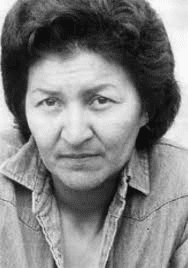
“She saw that we couldn’t really stop industry, but we could have an impact and a say,” Dayle Hyde, daughter of former Fort McKay chief Dorothy McDonald
She decided it was in the best interest of the community to hop on board the resource development boom or be left in the dust.
The Fort McKay Industry Relations Corporation was formed in 1986 to help improve the relationship with industry. “And they (industry) agreed. To represent our main concerns, work with elders and find solutions,” said Boucher.
The initiative also allowed for environmental agreements and recommendations that is supported by the bands sustainability department.
It’s not that the two sides are now walking hand in hand, but the communication channels are a lot smoother.
“We certainly take views which are contrary to what industry and government would like to hear and we certainly will not back off. I think people will have this view that we’re working with industry- which is true; we’re working with government- which is true. But we’re moving ahead on our interests and we’re trying to develop a base and a foundation for our young people so that they will have a good future,” said Boucher.
He added that Fort McKay is just like other communities. They have aspirations, hopes, dreams and ability. And they strive to use the skills given to them by Elders on how to move forward in the future.
@songstress28




